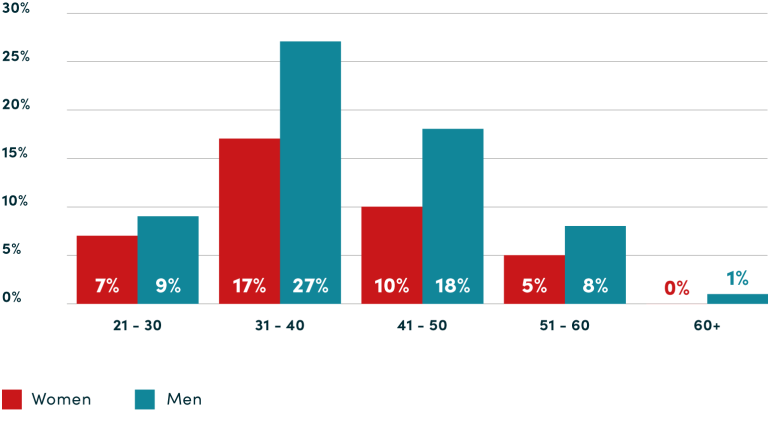Companies are strengthening the pipeline of female talent not only through hiring but also by promoting more women into management roles. Together, these efforts are helping to raise the overall share of women in leadership.
Compared to their share of the overall workforce, men receive more promotions than women. While women make up 39% of all employees in the sample, they account for only 37% of promotions. However, this is still higher than the current share of women in management (30%), indicating that promotions are contributing to the growth of the female talent pipeline.
At the same time, with women making up 37% of promotions but 46% of non-management positions, it’s clear that the talent pool at the non-management level is not being fully utilized.
In management positions, hiring trends slightly contribute to increasing the share of women: 36% of new hires are women compared to 30% already employed in management positions.
However, women are less likely to be hired into management roles compared to their overall share in the workforce. Thus, the same trend holds for management hires and promotions: They contribute to increasing the share of women in management, but the diverse talent pipeline remains underutilized.
Starting around age 30, men gain an advantage over women. This life period can therefore be viewed as a “career killer” for women and a “career accelerator” for men. There is a small gap between the promotion rates of men and women between 21 and 30. That gap is at its widest between the ages of 31-40, and slightly shrinks as people age.
